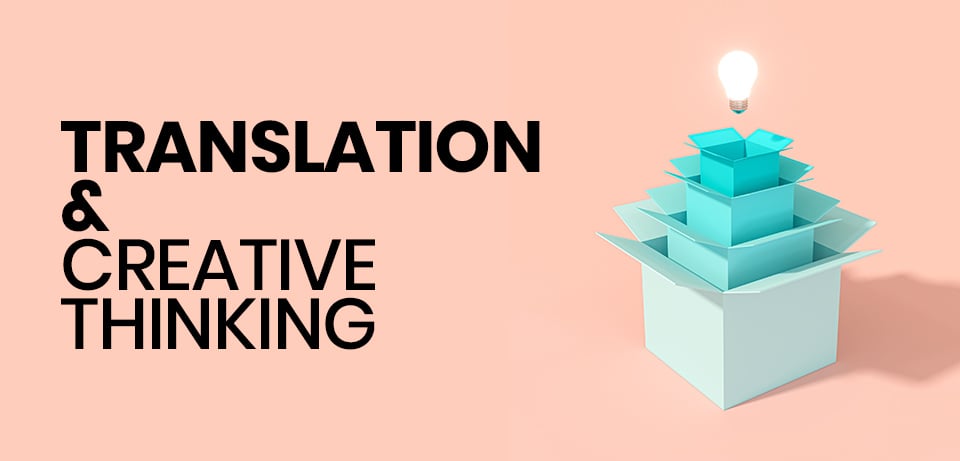Thinking Creatively during Translation

In a number of different fields, translation is used to relay information in one language in another one entirely. Examples of this are legal contracts translated for the benefit of international business partners, and food labels provided in multiple languages so that overseas consumers are advised of the ingredients and preparation methods. The contract would require a word-for-word/literal translation so that it is absolutely clear to all parties what is being agreed to, and a similar approach would be required for the ingredients, as a mistranslation could have dangerous consequences for allergy sufferers, for example.
However, the translation of the preparation methods may allow for slightly more flexibility as languages have nuances of expression, e.g. ‘Cook on high’ may be rendered in French as ‘Cuire à pleine puissance’, literally ‘Cook at full power’. Nevertheless, this is still a relatively faithful form of translation in comparison to the creative approach (often known as transcreation) that is becoming ever more desirable in the brand-rich world we now inhabit.
Transcreation is a specialism and not all translators (or translation agencies) have the ability and/or desire to take it on. Here at Xigen, we aim to focus our attention in this area because creative translation projects are often some of the most interesting and rewarding out there. They most often involve marketing material and can lead to interaction with some of the world’s biggest brands. It is important to us that transcreation is done well and the end result functions in the target market, independently of the original. In order to achieve this aim, we follow these pointers:
The Audience
As with all translation, we always keep in mind the audience. With transcreation, it is essential to carry out research to determine whether a brand will resonate with the same demographic in the target culture as it does at home. The client may have some idea on this or it may be appropriate to undertake further research – it is helpful if there is already some cultural understanding amongst the team. The objective with this is to avoid things such as overly colloquial language when it is, say, an older audience that the brand is targeting overseas. This may mean effectively rewriting some aspects, introducing elements of copywriting into the transcreation process.
The Overall Idea
During a transcreation project, it is vital to think in terms of the overall idea. Since a concept might not work in another culture (think of brands that claim their products lead to certain behaviour on the part of the consumer, such as running through the streets singing – this might be alien to people in other parts of the world), it could be necessary to rework this entirely so that it makes sense for the new audience (the above might be changed to someone happy at home with their family in a more reserved society). The message and imagery should be kept consistent throughout a campaign in order to ensure that there is a clear brand voice coming through.
Translators who take on transcreation projects should be capable of thinking in more imaginative terms about the desired effect of what they are producing, and not become too focused on the words themselves. Given this requirement, such translators often come from creative backgrounds,perhaps having worked in marketing before, or have copywriting experience in their own language.
Localisation
It may be the case that transcreation is required even for speakers of the same language. This is normally referred to as localisation. One of the key aims of transcreation is to mirror the effect of the original amongst the new audience. Some basic examples would be:
perception of the product as delicious (importance of appealing-sounding vocabulary)
= purchase
perception of the brand as great for kids (importance of positive language aimed at parents)
= follow link to website
This means that locale-appropriate language must be used, e.g. a new snack may be described as ‘lush’ in the UK but another adjective would likely have to be found if the advertising campaign was to be rolled out in the US.
New Identity
As with all types of translation, there are sometimes terms that have to be translated as dictated by the client, i.e. according to company documentation. This may be the case when a consumer is used to seeing products or instructions presented in a certain way and so introducing new terms may lead to unnecessary confusion. Equally, there may be text that should not be translated, such as brand names. Sometimes however, translated versions of these may be devised in order to give the brand a new identity in the new market.
As mentioned previously, it is essential that such newly-coined terms are used consistently throughout marketing collateral, and the rest of the messaging and imagery fits with them.
At Xigen, we believe we have developed a great formula for tackling translation projects that demand more than the normal level of creativity. If you want to find out more, get in touch today for a chat with one of our transcreation experts.


 Back
Back